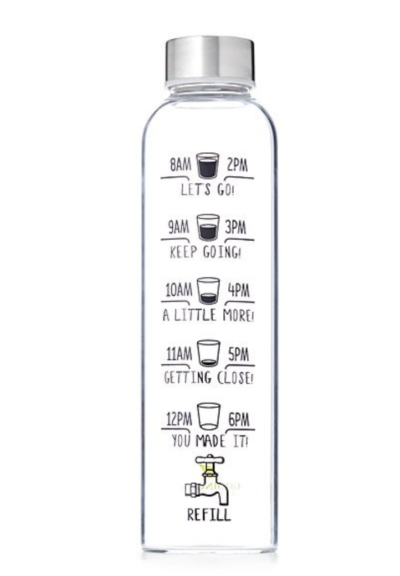
How Many Fluid Ounces in a Bottle of Water? A Comprehensive Guide
Growing up, I always wondered how much water was in those plastic bottles I often carried around. It wasn’t until I started learning about measurements and units in school that I finally understood the concept of fluid ounces and how they related to water bottles.
Whether you’re an avid hiker, a fitness enthusiast, or simply someone who wants to stay hydrated throughout the day, understanding the fluid ounces in a bottle of water is crucial. Let’s dive into the details and explore everything you need to know about this essential measurement.
Fluid Ounces: A Unit of Measurement
Fluid ounces (fl oz) are a unit of volume used to measure liquids. One fluid ounce is equivalent to 1/8 of a cup or approximately 29.57 milliliters. In the context of water bottles, fluid ounces provide a standardized way to indicate the quantity of water contained within.
Water bottles come in various sizes, ranging from small individual-serving bottles to larger containers suitable for families or groups. The fluid ounces marked on the bottle label represent the total volume of water it holds.
Standard Fluid Ounce Measurements in Water Bottles
In the United States, the most common fluid ounce measurements for water bottles are as follows:
- 8 fl oz (small individual-serving bottles)
- 12 fl oz (standard-sized individual bottles)
- 16.9 fl oz (half-liter bottles)
- 20 fl oz (larger individual bottles)
- 24 fl oz (large individual bottles or small family-sized bottles)
- 32 fl oz (family-sized bottles)
Note that these measurements may vary slightly depending on the brand and manufacturer of the water bottle.
Importance of Fluid Ounce Measurements
Knowing the fluid ounces in a bottle of water is important for several reasons:
- Hydration tracking: It allows you to monitor your daily water intake and ensure you’re drinking enough water to stay hydrated.
- Portion control: If you’re following a specific diet or fitness plan that requires you to measure your water intake, knowing the fluid ounces helps you accurately portion your water consumption.
- Avoid overconsumption: Consuming too much water can lead to hyponatremia, a condition caused by a sodium imbalance in the blood. Fluid ounce measurements help you avoid overhydrating.
Tips for Optimal Hydration
To maintain optimal hydration, consider these tips:
- Drink regularly: Don’t wait until you feel thirsty to drink water. Sip water throughout the day, especially before and after physical activity.
- Choose the right bottle size: Select a water bottle size that suits your hydration needs and lifestyle. Small 8-12 fl oz bottles are portable for on-the-go hydration, while larger bottles can provide a full day’s supply.
- Consider your activity level: If you’re actively exercising or spending time in hot weather, you’ll need to drink more water. Adjust your fluid intake accordingly.
FAQs on Fluid Ounces and Water Bottles
Conclusion
Understanding the fluid ounces in a bottle of water is essential for maintaining proper hydration. Whether you’re a casual water drinker or an avid athlete, knowing the right measurements helps you stay adequately hydrated and avoid both over- and underconsumption. Remember to consult your healthcare provider with any specific hydration concerns or if you have a medical condition that may affect your water intake.
So, are you interested in the topic of fluid ounces and water bottles? Let us know in the comments below!

Source Image: www.pinterest.com

Source Image: www.pinterest.com

Source Image: www.pinterest.com
Thank you for your lively participation in reading this. How Many Fluid Ounces In A Bottle Of Water, offers valuable insights to deepen your understanding.